Nanluoguxiang in Beijing’s Dongcheng district is a narrow hutong where families have lived for over 700 years. Once, Beijing was full of hutongs, yet now they are being demolished at an amazing rate to make way for new roads and office blocks.
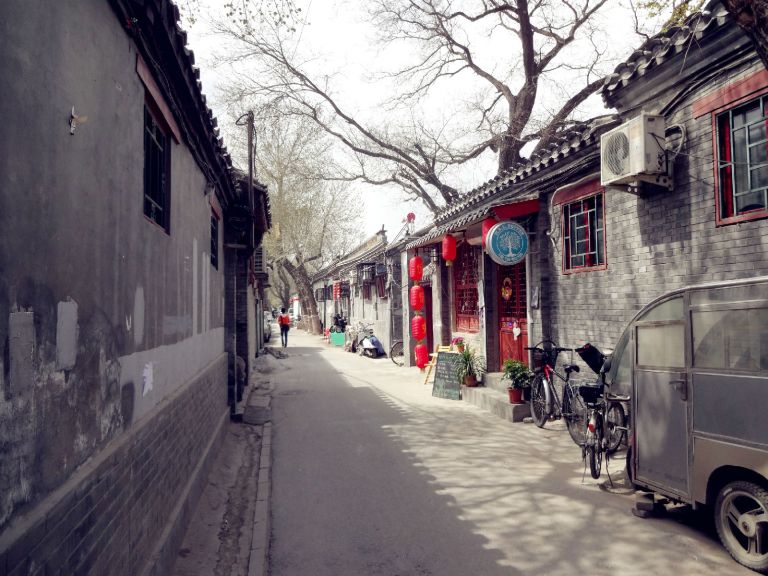
I arrived at Nanluoguxiang by taxi from my hotel in Wangfujing. The ride took about 20 minutes but I cannot remember how much the fare was. I can remember being stuck in a big traffic jam for a while, though. Still, I was happy to get to experience one of the traditional hutongs of the city, and Nanluoguxiang is generally accepted to be the finest example. Incidentally, the term “hutong” actually is an old Mongolian word meaning “town”, and first appeared in China during the Yuan Dynasty. In most remaining hutongs in Beijing, living conditions are poor, with water and electricity sparse. However, they are not as bad as the Joburg townships! Hutongs still have their good points, and this is why backpackers and travellers of all ages will descend into the Nanluoguxiang madness to see what there is to offer!

One of the things I like most about these hutongs is the historical community aspect. Once upon a time, thousands of people used to live along these narrow stone streets in the famous one-storey brick houses. Nowadays, of course people do still live in hutongs throughout Beijing, even though Nanluoguxiang has become something of a tourist trap. If you look closely enough, however, you can still see elements of daily life going on as you walk through the area. It reminded me a lot of the working communities of Bukchon Hanok Village in Seoul, and to a slightly lesser extent Sannenzaka Ninenzaka in Kyoto.
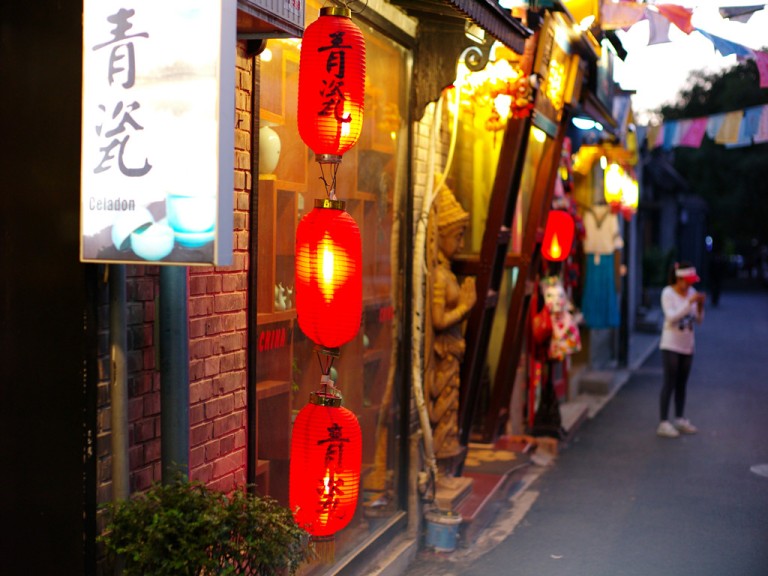
I don’t know who was eligible to sell things at Nanluoguxiang (who knows if it was the residents or businessmen from other parts of the city) but you couldn’t move an inch really without walking up to the next vendor, with carefully laid out plots on the cobbled streets. These narrow lanes in the hutongs are notoriously difficult for vehicles to navigate, especially with all the tourists crowded in, and sometimes it makes the odd delivery van driver furious! You hear the aggressive honking of horns so much at Nanluoguxiang you could easily be on the streets of Delhi!
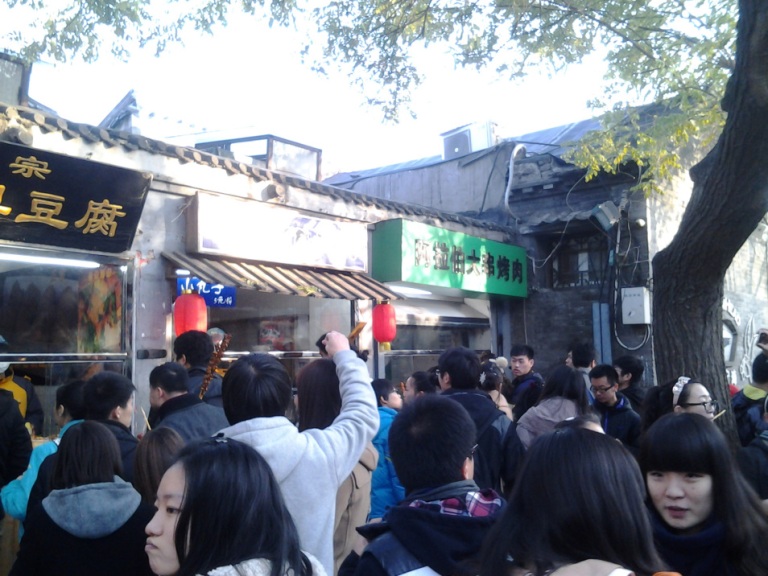
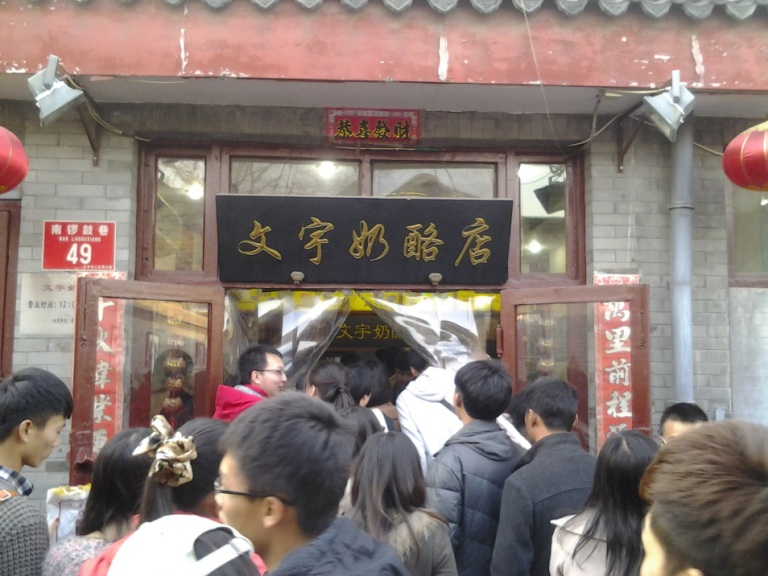
One of the best parts of Nanluoguxiang I thought was the street food available. The food was generally served up from inside one of the small buildings, rather than a cart on the side of the road (like, say, in Bangkok), and there was everything here from Japanese takoyaki to candy floss! The queues for these eateries were amazing, but as I was hungry, I didn’t mind waiting!
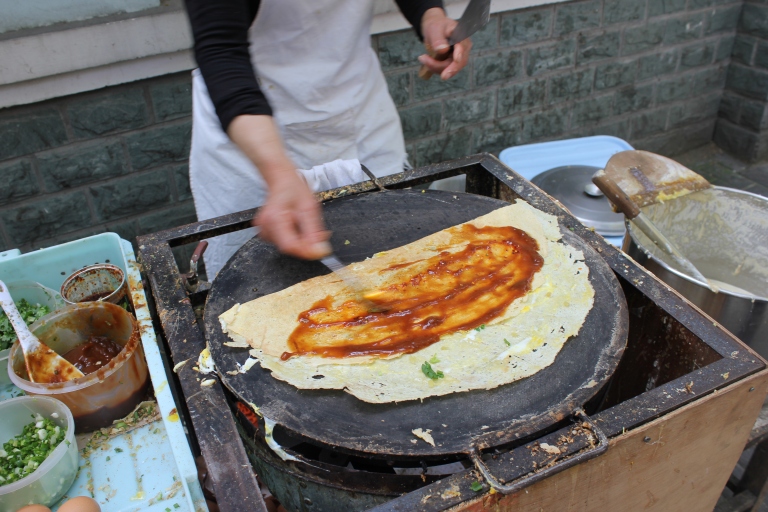
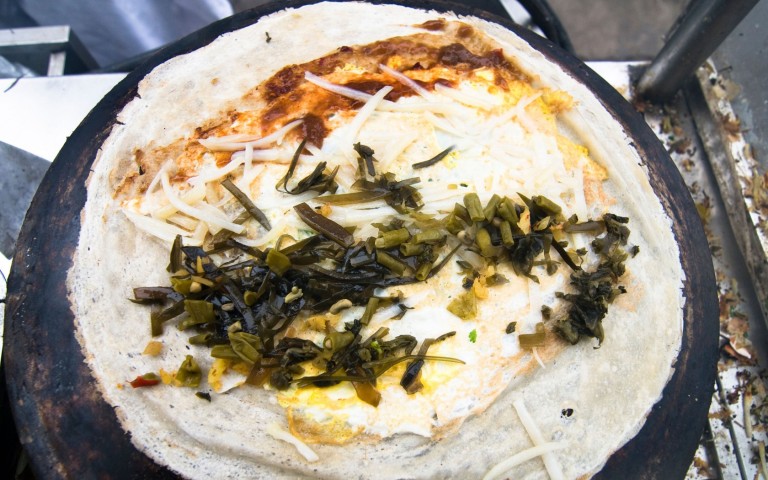
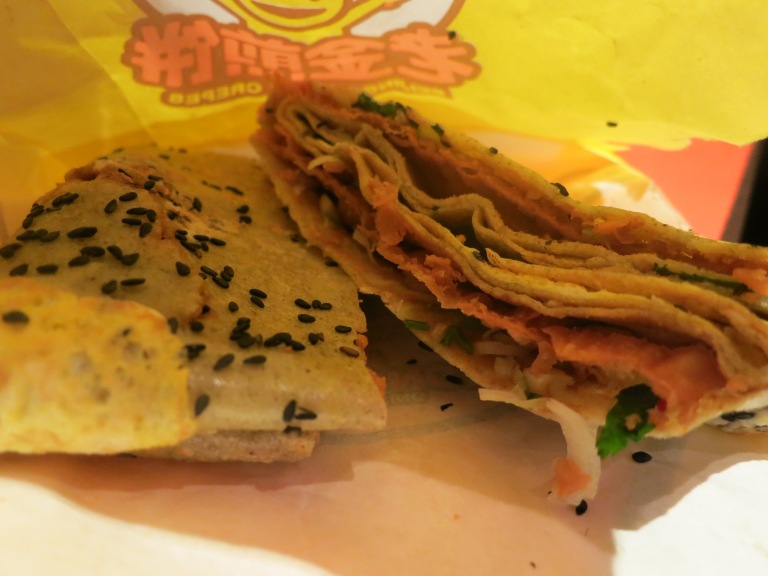
Jianbing is a Chinese pancake-style wrap, that could be somewhat similar to a roti from Indian cuisine. The wrap is usually fried on a griddle with eggs and then topped with scallion and cilantro. Inside the wrap, it can be filled with meat and salad. It was one of my favourite Chinese snacks when in and around Beijing, and just outside Nanluoguxiang Hutong I found a delectable jianbing from a street food vendor. It was a case of me following my nose and going where the good food was! The community of this Beijing hutong would no doubt approve of my ingenuity!


You’ve been all over :)! Cool!
LikeLike
Thanks for reading! I enjoyed Beijing so much I wanna go back and see the Great Wall again!
LikeLike
Wow, thats in my bucket list, hope to see great wall too!
LikeLike
I stayed in Nanluogouxiang St. when I was in Beijing. It was a lovely place but the stores/shops are expensive compared to other shopping areas in Beijing.
LikeLike
I noticed the expensive stuff too, Sheila. Maybe nowadays Nanluoguxiang is a bit of a tourist trap.
LikeLike
I used to love Nanluoguxiang! But yes, it has become a tourist trap. However the hutongs around it are still pretty traditional! Once one of our teachers in Beijing took us for a field trip in the hutongs and we asked the residents about their life there!
LikeLike
Wow, I would love to have asked some questions to the locals! 🙂 Maybe one day I will go back to Beijing and try to experience other hutongs.
LikeLike